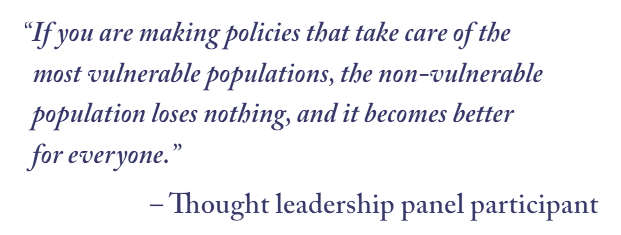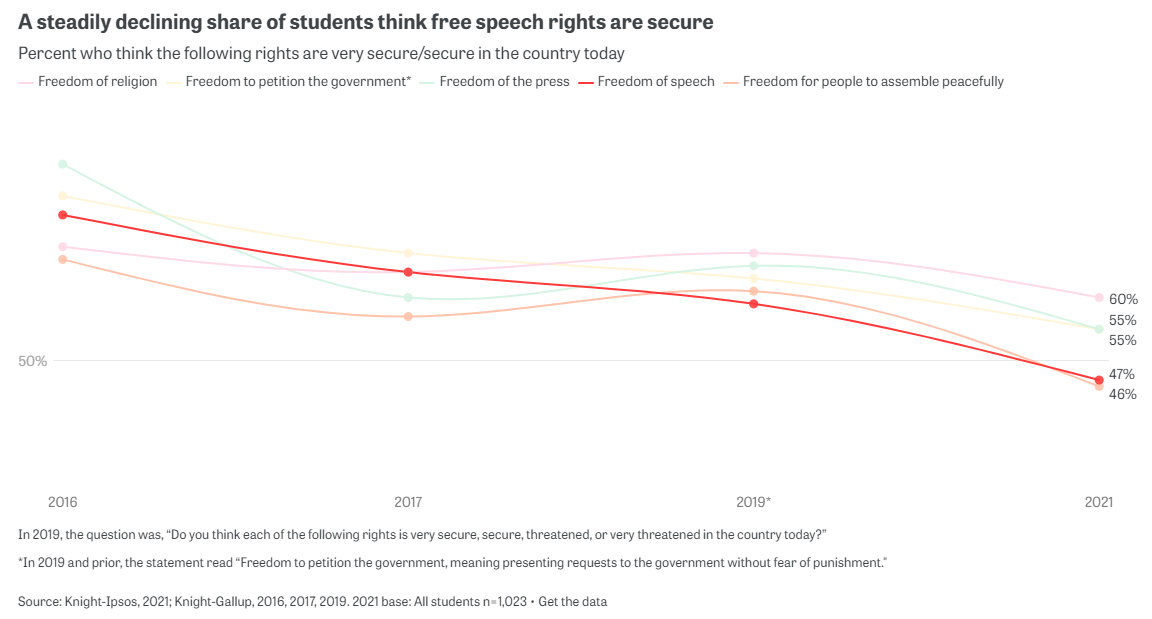Commentary
I simultaneously had an "aha!" and a "well, duh" moment the other day about transfer students. I am working on a benchmarking report about how institutions recruit and provide post-admit guidance for these three types of transfer
students—traditional transfer, swirling transfer, and reverse transfer. For whatever reason, it occurred to me late in the analysis that a student could be one, two, or all three types of transfer student throughout their postsecondary
experience. Each type requires a different type of guidance and set of resources from one institution or more in parallel. As we all know, the path to an education credential is not linear for many students. As a result, institutions
have to think strategically about many different approaches to serve all types of students effectively. When I visualize these paths, they strike me much more like the arrangement of nodes and runners within a black widow's web rather
than a neatly organized fractal canopy. The former is more challenging to manage than the latter. | |
AACRAO Research Update
We continue to advance our research about transfer students, credit mobility, and practice, benchmarking with various partners and projects. Most recently, our primary contacts received an invitation to complete or share a benchmarking survey on the state
of academic operations and student success for undergraduate students on February 21st. This survey focuses on curriculum management, catalog administration, and classroom space management. Over the year, we will address class scheduling (aka timetabling)
and degree/program demand analysis in two other initiatives, one comprehensive and one 60-Second Survey.
We have begun to formulate potential research on the strategic enrollment management role of the registrar and hope to engage our members in discussion and benchmarking efforts of what they believe that role should be (or not) starting in late spring.
We plan to focus our next 60-Second Survey on graduate and professional student enrollment management, as mentioned last month.
Current Higher Education Research and Related Topics
New Report Calls for Changes in Admissions and Aid Processes
A new report published by the National Association for College Admission Counseling (NACAC) and the National Association of Student Financial Aid Administrators (NASFAA) is calling for a complete overhaul of college admissions. Key areas examined include:
- Institutional Selectivity
- The Application Process
- The Federal Financial Aid Application Process
- How We Make Admission Decisions
- The Admission Staff
- Combating Implicit Biases in the Financial Aid Office

Latest Report on Transfer, Mobility, and Progress Shows Hopeful Signs
The latest report published by the National Student Clearinghouse Research Center shows some signs of stabilization in transfer enrollment. This was a huge study using data from 1.3 million transfer students. Key data points include:
- Transfer enrollment dropped by less than 1 percent, compared to a 9.2 percent decline in fall 2020.
- Non-transfer enrollment fell a further 4.1 percent, accelerating the previous year's 2.3 percent drop.
- Mobility increased among continuing students while it decreased among returning students.
- Transfer enrollment increased 1.2 percent for men while declining another 2.3 percent for women.

New Report Highlights Basic Need Insecurities at Historically Black Colleges and Universities
A new report from The Hope Center and the Center for the Study of HBCUs examines the challenges of the basic need affecting students at HBCUs during the fall of 2020. The full report contains rich data on the challenges faced by these students. This one-page
infographic summarizes the survey well.

New Article Examines Community College Completion
A new article published by The Brookings Institution in collaboration with Educational Evaluation and Policy Analysis examines the recent enrollment declines at community colleges. Specifically, it examines investments trying
to drive the re-enrollment of students who have partially completed a community college program. Key insights include:
- Many adults exit college with some credits but not a credential.
- Many who exit may not be academically ready to succeed in postsecondary education.
- Exited students with substantial academic progress typically experience steadily increasing wages without a credential.
- Most students who left without a credential were in a field of study without significant earnings increases associated with that credential.
New Report Examines College Student Attitudes Towards Free Speech
A new report from the Knight Foundation surveyed more than 1,000 college
students and 4,000 other adults. It looks at how college students' views on free speech compare with those of the public at large. Key findings include:
- Students believe exposure to a broad spectrum of speech at college is important.
- Students view free speech as important but see those rights as less secure.
- Students favor college policies that limit racist speech but do not support other speech limits.
- Students say speech on campus is making nearly 1 in 5 students feel unsafe.

The Latest Completing College Report Shows Strong Completion Rate Growth
The latest report from the National Student Clearinghouse Research Center shows a more than one percentage point increase in completion rates for the latest cohort of students in the study. Key points include:
- The national six-year completion rate for the fall 2015 beginning cohort reached 62.2 percent, a 1.2 percentage point increase over the 2014 cohort.
- Completion rates of students from all institution types increased, with the largest increase among community colleges.
- Two-thirds of states improved by one percentage point or more in completion rates.
- Completion rates increased for White students and students of color.
- Adult learners showed the largest completion rate growth, particularly at public four-year and community colleges.
- Shifting student demographics and enrollment patterns may have contributed to the rate increases. Traditional college-age students and public four-year starters comprised a greater share of the 2015 cohort; this is part of a longer-term trend.